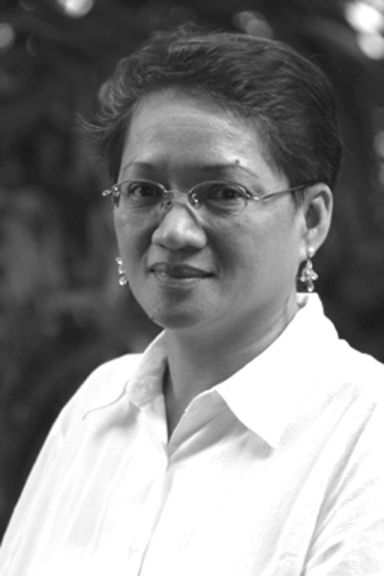
APALISOK
It’s good to know that all is well now between Cebu Vice Governor Agnes Magpale and Provincial Tourism Office (PTO) head Joselito “Boboi” Costas.
The rift over certain tourism programs that didn’t sit well with the vice governor and had some municipal mayors feeling left out by the PTO’s initiatives had been ironed out, thanks to Vice Governor Magpale’s openness to accept Boboi’s apology and his humility to own up to his mistakes.
Some quarters were trying to depict the row as a brewing political enmity between Governor Hilario “Junjun” Davide III and Vice Governor Magpale, but instead of fanning speculations, the protagonists opted to move forward and leave the misunderstanding behind them.
It was not a slight mix-up, but the vice governor bowed to the interest bigger than her own and that is what is called statesmanship. On the other hand, Boboi opted to stick with the job at Capitol, and that is called passion. I hope they work closely together and infuse their individual passions in bringing about what looks to me like the golden age of Cebu tourism.
Last October 21, the provincial government hosted a luncheon gathering for Governor David Ige of Hawaii and a 50-man delegation for the 27th Trade & Goodwill Mission sponsored by the Filipino Chamber of Commerce and Industry in Hawaii (FCCH).
The gathering at the Capitol was the last leg of the trade mission’s visit which began on October 14 in the historic city of Vigan, Ilocos Sur. A highlight of the goodwill mission is the signing of the Memorandum of Understanding (MOU) between the State of Hawaii and the League of Provinces of the Philippines (LPP) headed by Ilocos Sur Governor Ryan Singson.
That the MOU was forged in the capital of Ilocos Sur is momentous because the region holds a special place in the history of Hawaii. Some 110 years ago, a group of 15 able-bodied men left Cabugao, Ilocos Sur, for the US territory via SS Doric to work in sugar cane and pineapple plantations of Waipahu.
We are familiar with the hardships and struggles of seasonal workers called “sakadas” in the sugar cane plantations owned by wealthy hacienderos of Negros Occidental. The fate of the Ilocanos who arrived in Waipahu in the early 1930s was similar, except that after more than a century, the hardy Filipinos who sailed off to the foreign land have earned their rightful place in the adopted country many now call home.
The Filipino population in Hawaii is pegged at more than 369,000 comprising the largest and fastest-growing ethnic group in the US territory. They belong mostly to the working class; but over the years, many have made their mark in the field of politics, sports and medical profession.
In fact, among US states and territories, Hawaii holds the distinction of having elected the first Filipino governor. This was in 1996 when Ben Cayetano came out victorious in a hotly contested election.
While Governor Junjun Davide treated the Hawaiian delegation to a sumptuous lunch peppered with cultural treats, former Cebu governor and board chairman of Cebu CFI Community Co-operative Pablo Garcia welcomed a member of the Hawaiian trade mission to the CFI Co-op headquarters, a veritable stone’s throw away from Capitol.
Born in Waipahu, Hawaii, Mr. William Rol represents a family of the last wave of Ilocanos who arrived in the island state in the mid-40s. A surfing instructor, Wil also serves as community relations officer of the Matanuska Federal Credit Union based in Alaska with an operating branch in Waipahu.
I happen to know Wil because we both attended the inaugural Canada Development Educators training program in Halifax, Nova Scotia, Canada in June this year.
How amazing that he was able to insert a side trip to Cebu’s remarkable cooperatives as the Hawaiian trade mission was winding down. I gladly organized his co-op itinerary, one that hopefully will help him earn the title of International Credit Union Development Educator (I-CUDE). I hope to write a separate article about this particular co-op exposure. Suffice it to say that the MOU between the state of Hawaii and LPP has tons of opportunities for co-operative tourism.
During a brief welcome program for the Fil-American visitor, Noy Pabling told co-op leaders that he had the privilege of visiting Hawaii in 1996 upon the invitation of then Governor Ben Cayetano. According to the co-op leader, Cayetano is a Visayan, having roots in Southern Cebu and Leyte.
I think that when Noy Pabling agreed to host the luncheon gathering, it was his own way of returning the hospitality of Hawaiian hosts who embraced him when he visited Honolulu 21 years ago. He vividly remembers visiting the central market where many Pinoys vend and shop. (to be continued)
Disclaimer: The comments uploaded on this site do not necessarily represent or reflect the views of management and owner of Cebudailynews. We reserve the right to exclude comments that we deem to be inconsistent with our editorial standards.
